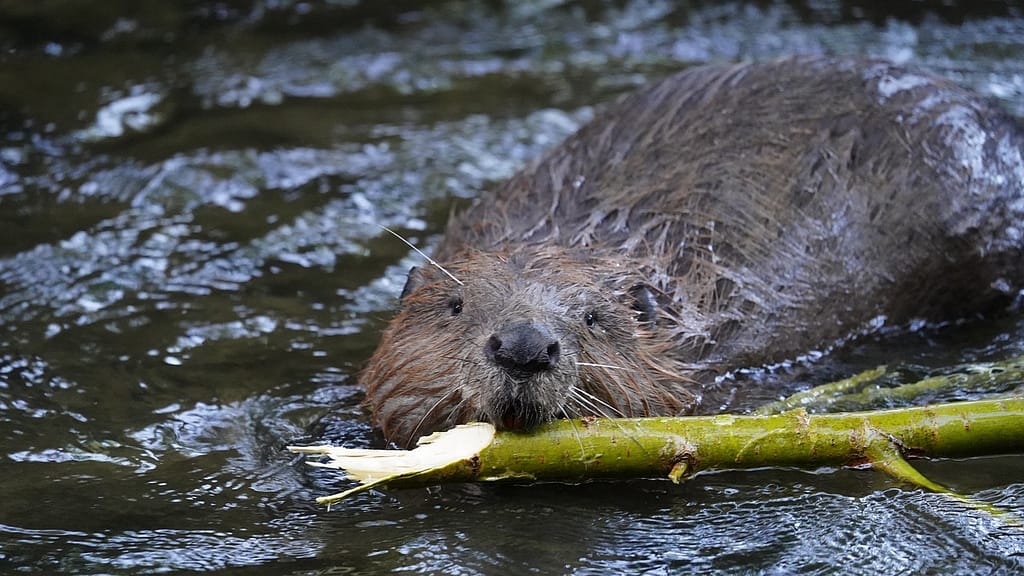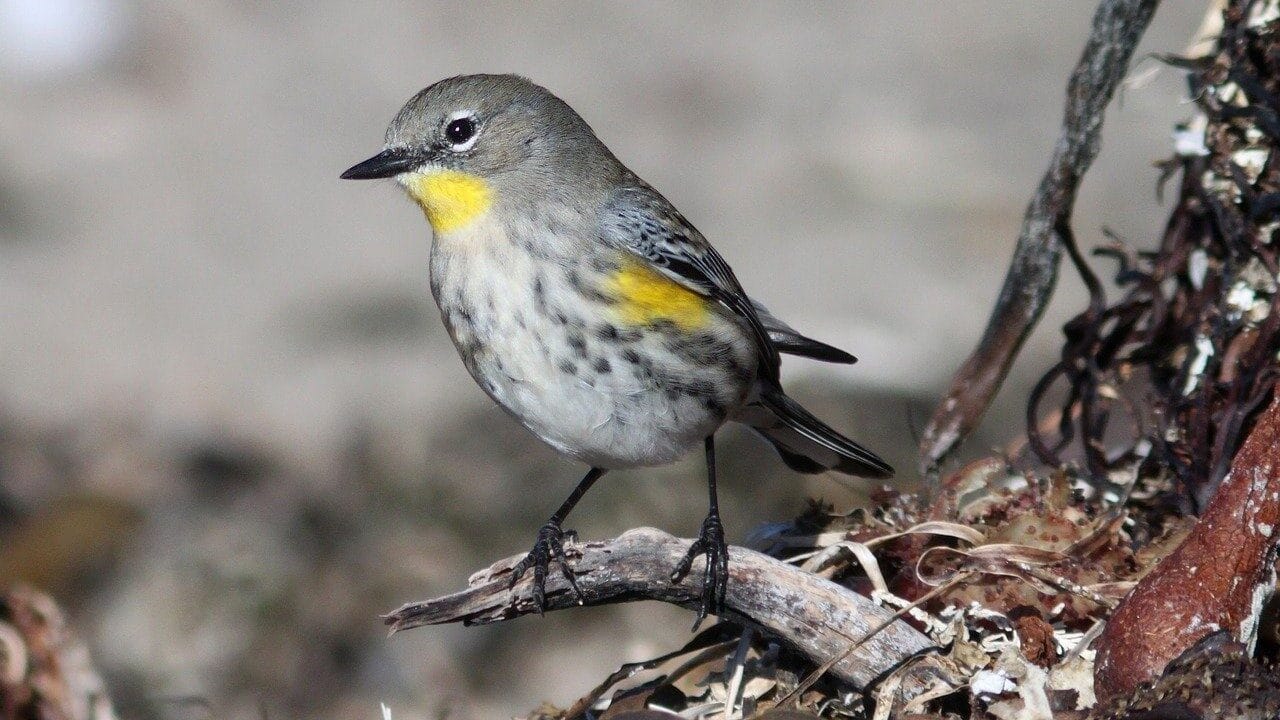Imagine if we had millions of eager, highly skilled, environmental engineers, ready to devote their lives to fight drought, forest fires, and flooding—24/7, 365 days a year—never asking for payment, just wanting to be left in peace. Wouldn’t we want to welcome them to our communities? Well, you don’t have to hope they show up, they’re already here! They just aren’t people, they’re beavers.
Yes, the humble beaver that once numbered in the hundreds of millions in North America could be a key part of a new kind of climate action plan.
So, how exactly do beavers have such a profoundly positive impact on our environment, and what can we do to make sure that they are protected?

Living Alongside Nature
I was lucky enough to grow up next to a beaver pond, spending hours as a kid creeping down to the banks to watch the beavers paddle around and dive beneath the surface of the murky water. Occasionally, I’d get too close or startle them and they would slap their tails on the water, warning their neighbors of my presence. They were fascinating, industrious little creatures, and I watched as the ecosystem around the pond ebbed and flowed through the seasons as they built their dams and lodges. Little did I know how lucky I was to be able to still see these creatures in their natural habitat.
Prior to the 1600’s, beaver populations in North America were estimated to have been nearly 400 million strong. 1 Unfortunately, as trapping and the pelt trade exploded in the mid-17th to late 19th century beaver populations were devastated, by some estimates reaching only 10,000 individuals. 2 On the other side of the world in Europe and Great Britain, beaver populations were all but but wiped out, and extinct in many places by 1900. 3
Realizing the catastrophic impact trapping and furring was having on beavers, efforts to protect and conserve them began taking shape by the early 1900’s in North America and Europe. Since then, beaver populations have started to bounce back, and though by many metrics their story is one of conservation success, they still face some serious challenges. You see, much of the wetlands and stream systems beavers once called home have become farm land, roadways, culverts, and other structures or areas used by humans. So, as beavers have made their way back to these places where their ancestors roamed, their presence becomes a nuisance, and their dams are often destroyed and the beavers relocated or killed.
Reframing Beavers as our Best Environmental Engineers
For a while, we have understood that beavers were a cornerstone wetland species—vital to maintaining some of North America and Europe’s richest ecosystems—but very little was understood about how vital they were. Now, there is a growing body of research that shows how beavers and the dams they build and maintain are key to creating habitats that are more flood resistant, drought tolerant, widely biodiverse, and fire resilient. Benefits that aren’t just enjoyed by the creatures of the backcountry, we can see the positive impact they have on our own homes and livelihoods as well.
How is one animal able to do all of this? Maybe as a kid you created little rivers with running water, perhaps slowing a wave from going back to the sea at the beach, or diverting some little stream near your home. As you added barriers—dams of sand, rocks, or mud—the water didn’t go away as quickly, pooling behind the obstacles in its way. Beaver dams work in the same way, but even better. The reason beavers build dams is to create deeper, safer, channels of water to live in. As the water pools up behind the dam, the beavers then dig further channels along the banks of the stream or pond for safer travel.
These dams and channels do a few things. First, they slow the rate that water flows. So after a heavy rain or snow melt, water stays in an area longer—pushing it into floodplains—instead of just rushing downstream and creating flash flooding. 4 Second, they allow for water to be retained within the wetland, making them resistant to years of drought. 5 And third, they make a big difference in the case of forest fires. The wetlands created by beavers are often called “emerald refuges” that save valuable habitat during and after a forest fire, with swaths of rich green wetland standing starkly in contrast to incinerated landscapes around them. 6 During wildfires, these wetlands provide refuge for wildlife, and after they act as a kind of filtration system, catching the ash and sediment that can devastated fish and amphibian populations if it builds up as it rushes down stream. 7
As a byproduct of beavers just doing what they’ve evolved to do, they are saving valuable habitat and homes not just for animals, but humans, too. We benefit just as much when wildfires and flash floods are kept at bay. Our food supply chain is safer when lands are kept from drought. It may seem strange to see beavers as some of our best climate engineers, but if you live in an area where beavers do too, you might want to thank a beaver for preventing some damage to your home that you didn’t even know was coming.
So, what can we do to help these beavers get started?
Well, now that more and more people are becoming aware of the ways that beavers are some of our best environmental engineers, organizations are starting to take notice and beginning to implement conservation strategies that go beyond relocation and are giving beavers a head-start. Here’s a great video from PBS Terra to get you up to speed on what’s worked in conservation, what hasn’t—spoiler, it’s parachuting beavers—and what the future holds for these remarkable animals if we can learn to live alongside them and let them do what they do best!
If you want to check out more videos covering all aspects of science, conservation, and the environment, head over to the PBS Terra YouTube channel to take a deep dive into their library. They are quickly becoming one of our favorite channels to tune into, and if you love us, you’re sure to love them, too!
How you and I can be champions for beaver conservation!
One of the best ways we can start to help support healthy beaver populations is to educate ourselves and the people around us about how vital they are to our planet—after reading this article, you’re already equipped with some great conversation starters.
If you live in a place that has beavers and you or somebody you know is running into issues with them, I highly recommend you check out the Beaver Institute’s handy guide of common beaver problems and solutions that work with beaver conservation efforts. It’s an excellent resource to get people in a more positive headspace when interacting with beavers. For a more hands-on approach, look into local wetland conservation organizations to see if they need volunteers or funds to aid in their conservation, outreach, and education efforts.
One of the best ways for us to feel like we can be helpful is by starting with local resources.
Excited and want more examples of how beaver conservation is making a difference?
As I was researching this article, I found an amazing short film called Beavers without Borders that was made alongside the Beaver Trust, a UK based organization. This film is absolutely beautiful and takes a closer look at the positive impact conservation efforts have had in the UK and Europe, and it addresses how we can start to get over some of the negative perceptions beaver have in many communities.
If you want to give it a watch, it is linked here.
Turning to Nature for Climate Solutions
When it comes to ready-made solutions to help us tackle climate change, starting with nature is our greatest asset. The planet has had millions of years of research and development to solve some of our most pressing climate problems. As we turn back to nature to see how systems like beaver created wetlands have helped balance our planet throughout its history, we will start to work with nature… instead of against it.
This kind of thinking is already leading to conservation and sustainability breakthroughs! Here are just a few of my favorites:
What if We Saw the Oceans as Climate Innovators Instead of Climate Victims?
What if we stopped looking at the ocean as a victim of climate change, and instead realize that it holds dozens of ready-made climate solutions? The ocean is full of untapped potential to help us solve the climate crisis, we just have to reframe our thinking. Here’s how.
Read Article Watch Video Listen to PodcastNature Does it Better: Why Whales are the Best Carbon Capturing Technology We Have
If we change the plea of climate change from a moral perspective to an economic one, would that convince world leaders to pursue international climate efforts? As it turns out, protecting our world’s whales is worth trillions of dollars in climate change prevention.
Read Article Watch Video Listen to PodcastIt doesn’t take much to find inspiration in the natural world. Most of us have felt the wonder of standing in front of an open ocean, beautiful mountainscape, or awe-inspiring lake. And it doesn’t take much to feel the desire to protect these wild places for the next generation. Whatever landscape you hold dear, your voice is important in making sure those places continue to be treasured and protected.
Stay beautiful and keep laughing!
-Liesl

Don’t miss out on a single article!
Enjoy unlimited access to over 500 articles & podcast that give you a positive perspective on the state of the world and show you practical ways you can help.
Notes:
- Terra, P. (2021). Want to Solve Wildfires and Drought? Leave it to BEAVERS! [YouTube Video]. In YouTube. https://www.youtube.com/watch?v=6lT5W32xRN4 ↩
- Whitcomb, I. (2022, February 7). Beaver Dams Help Wildfire-Ravaged Ecosystems Recover Long after Flames Subside. Scientific American. https://www.scientificamerican.com/article/beaver-dams-help-wildfire-ravaged-ecosystems-recover-long-after-flames-subside/ ↩
- Eurasian beaver – People’s Trust for Endangered Species. (2016, November 30). People’s Trust for Endangered Species. https://ptes.org/get-informed/facts-figures/eurasian-beaver/ ↩
- Auster, R. E., Barr, S. W., & Brazier, R. E. (2022). Beavers and flood alleviation: Human perspectives from downstream communities. Journal of Flood Risk Management, 15(2). https://doi.org/10.1111/jfr3.12789 ↩
- How. (2021, August 20). How the Eager Beaver Helps Protect the Planet. NRDC. https://www.nrdc.org/experts/jennifer-sherry/how-eager-beaver-helps-protect-planet ↩
- https://www.beaverinstitute.org/wp-content/uploads/2022/08/Fouty_2020_Beaver-wetlands_wet-meadows_ponds_wildfire.pdf ↩
- Whitcomb, I. (2022, February 7). Beaver Dams Help Wildfire-Ravaged Ecosystems Recover Long after Flames Subside. Scientific American. https://www.scientificamerican.com/article/beaver-dams-help-wildfire-ravaged-ecosystems-recover-long-after-flames-subside/ ↩
- Terra, P. (2021). Want to Solve Wildfires and Drought? Leave it to BEAVERS! [YouTube Video]. In YouTube. https://www.youtube.com/watch?v=6lT5W32xRN4 ↩








